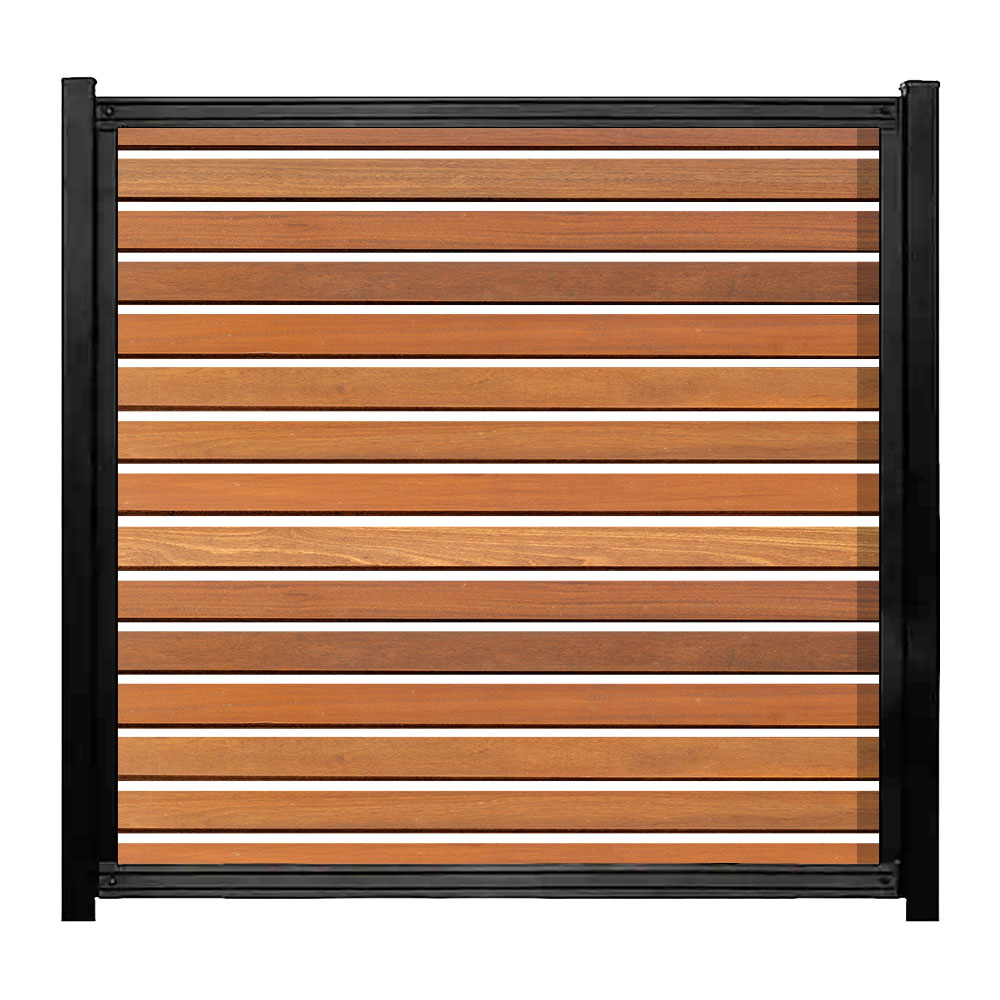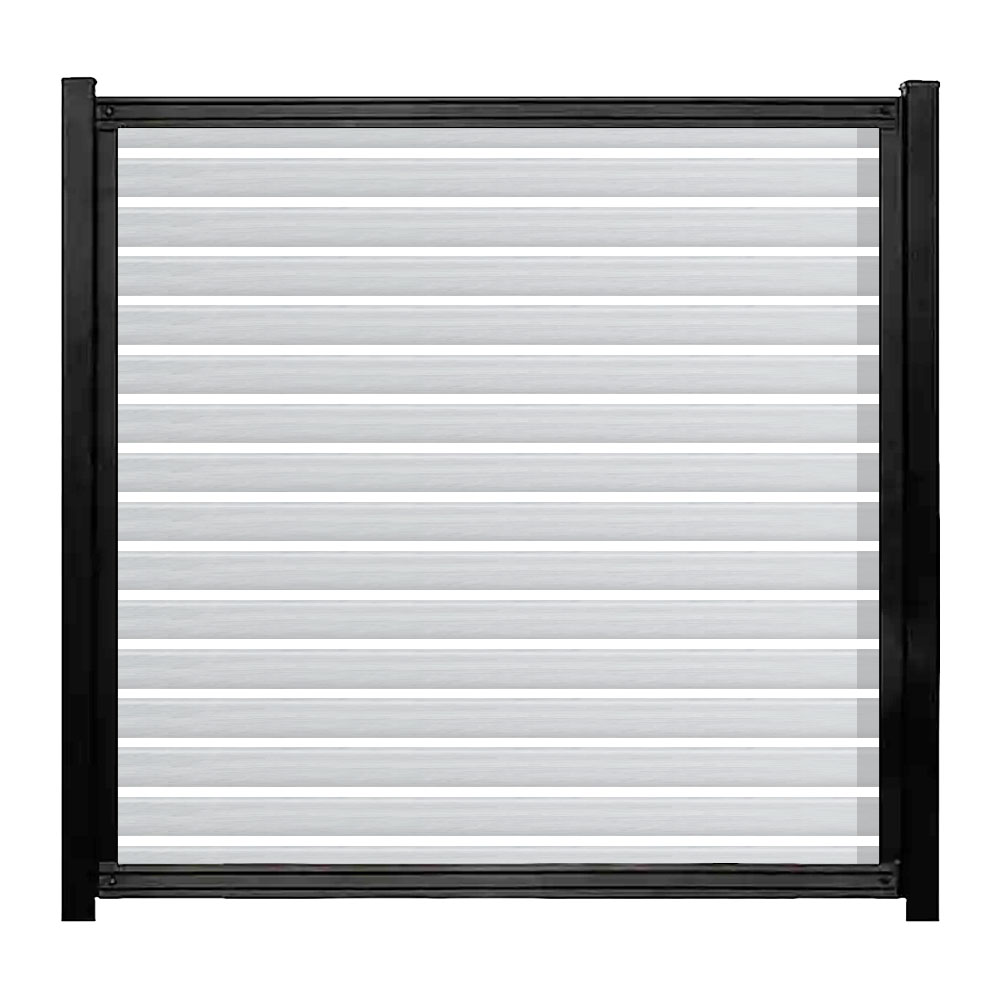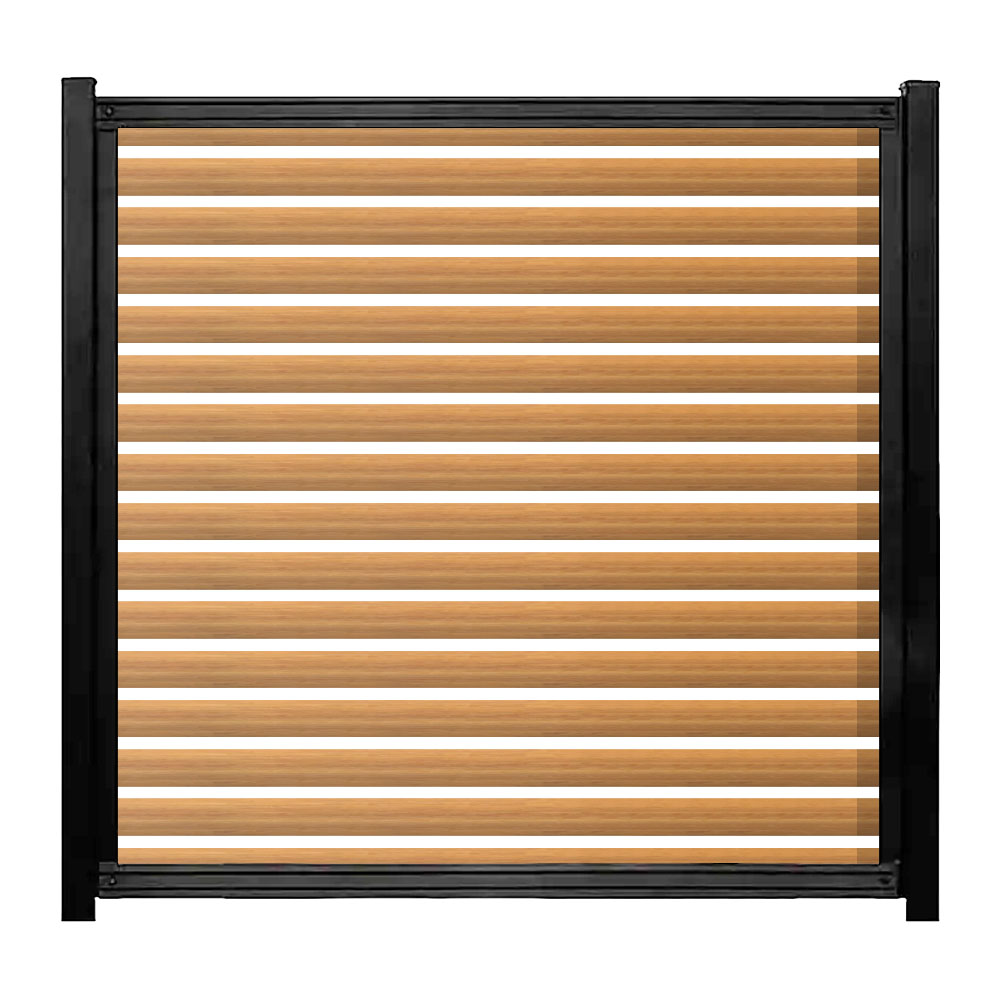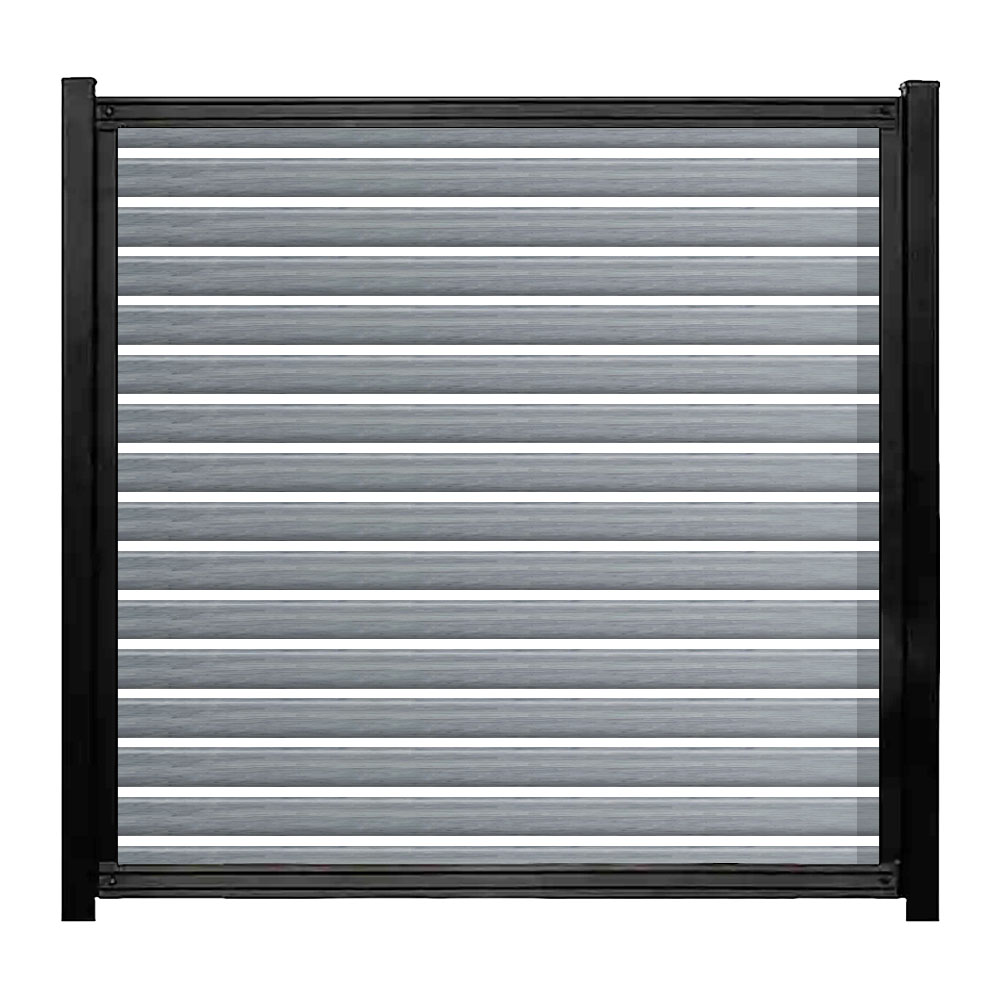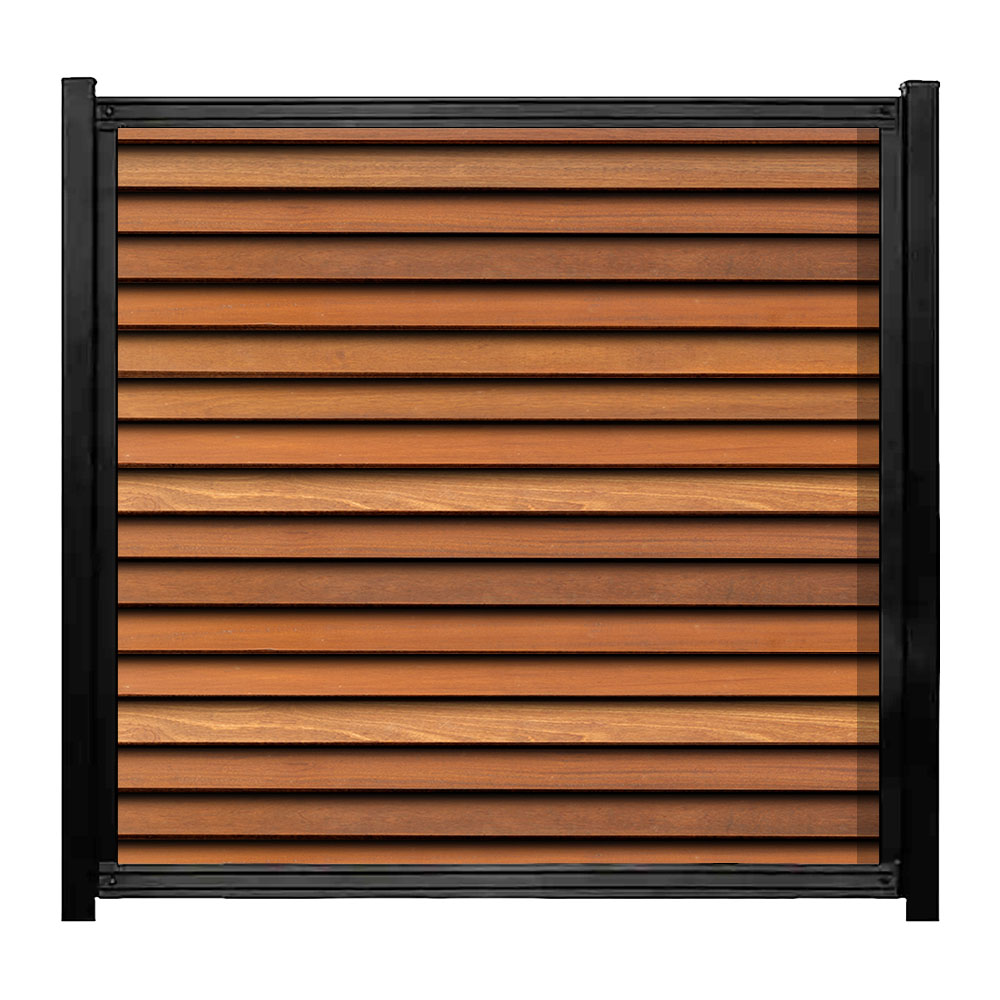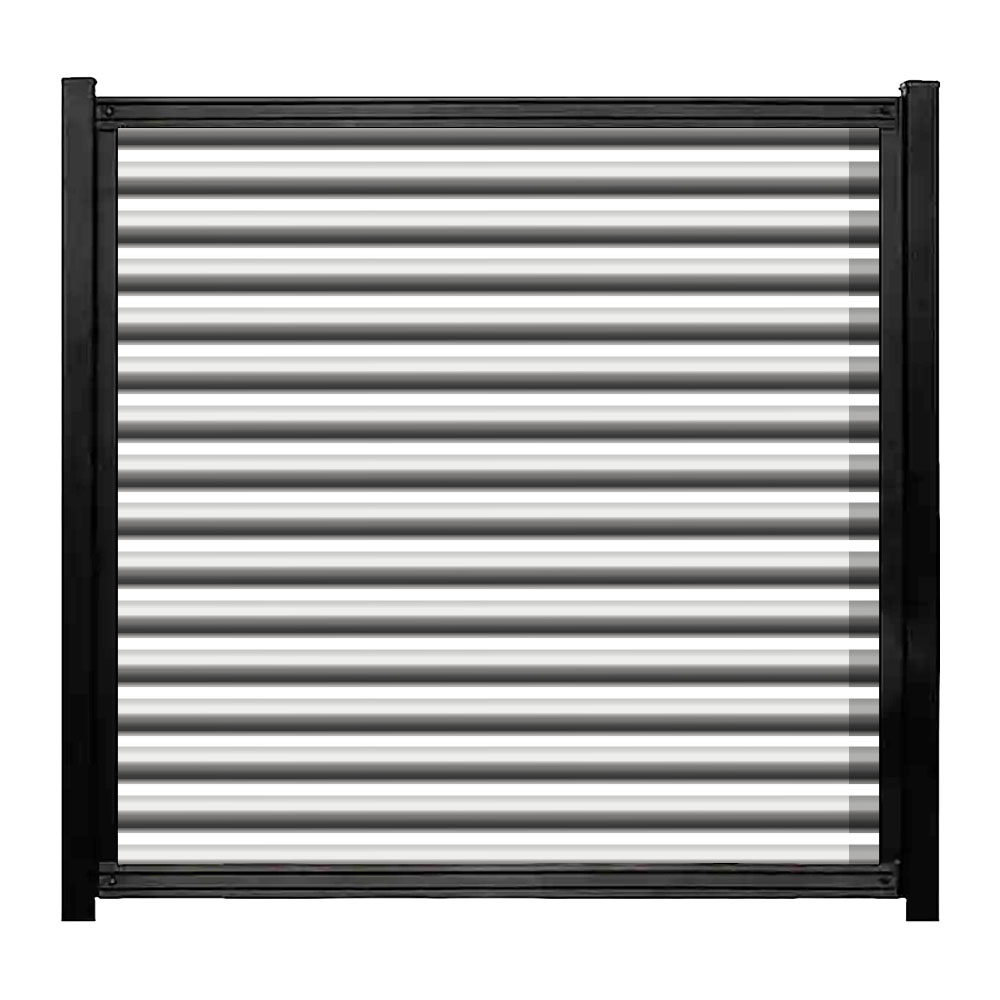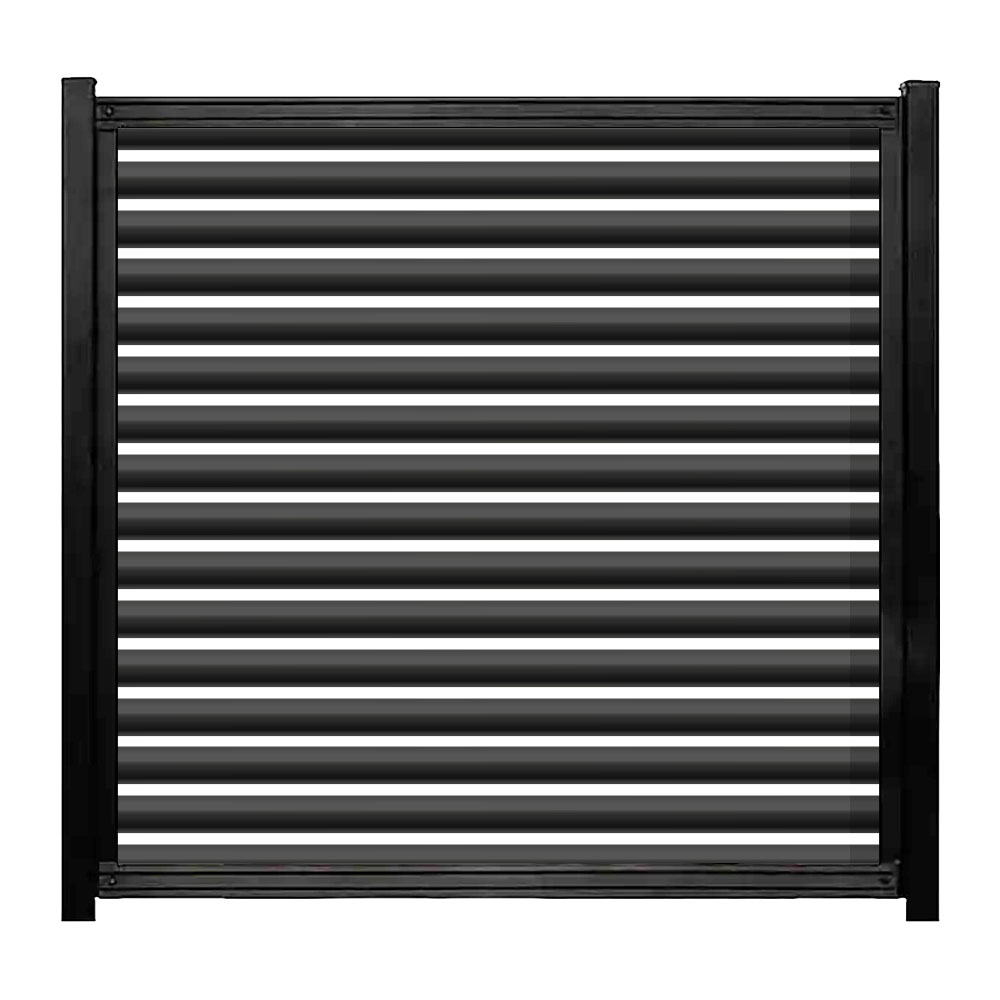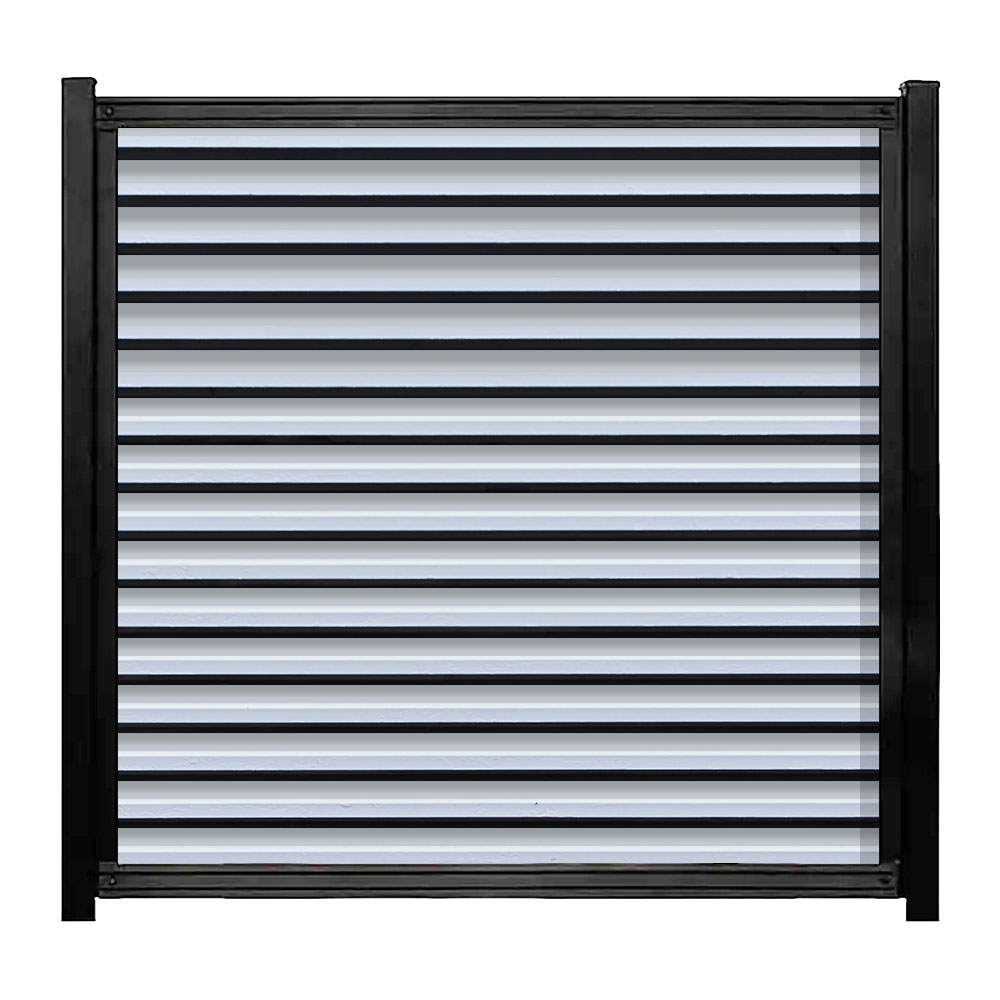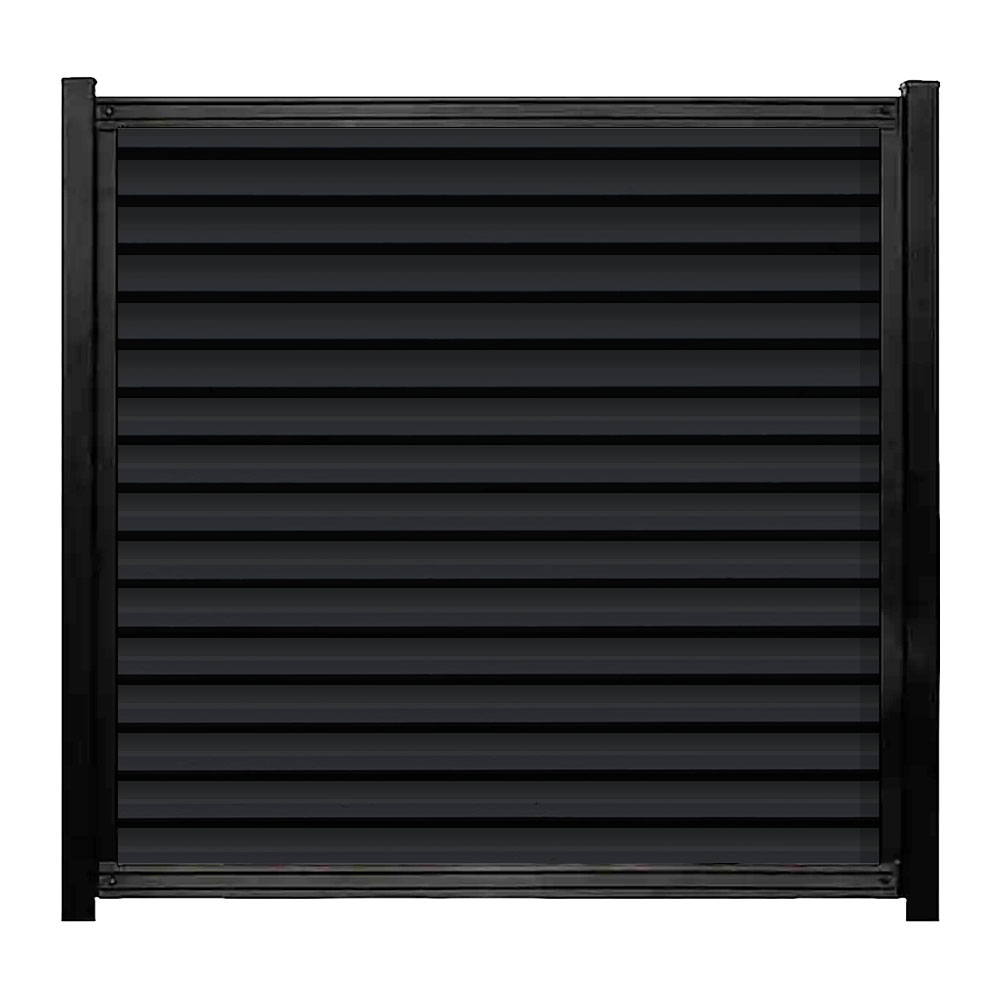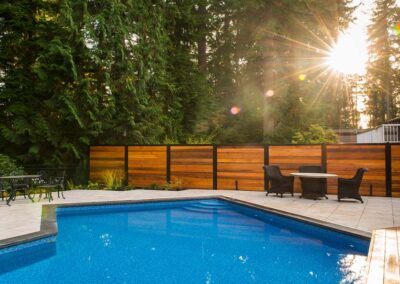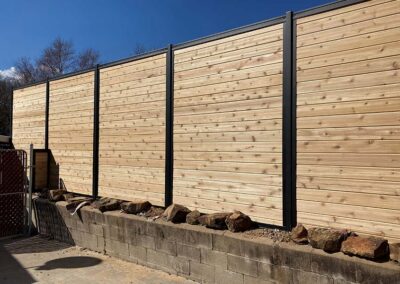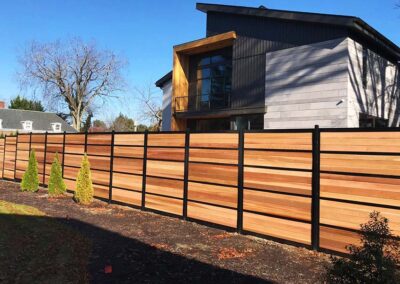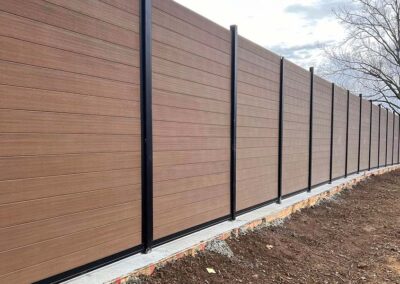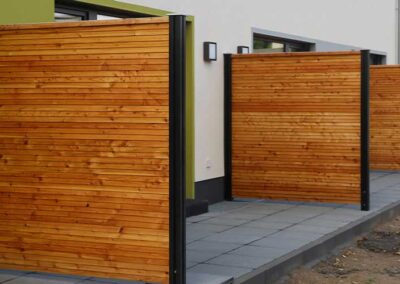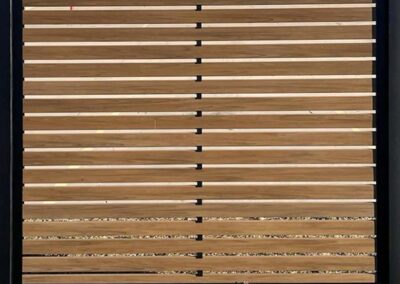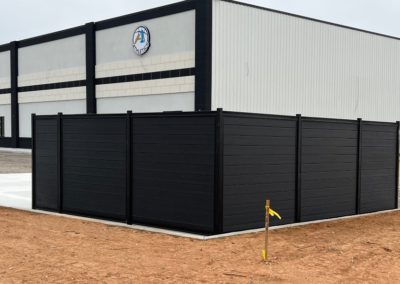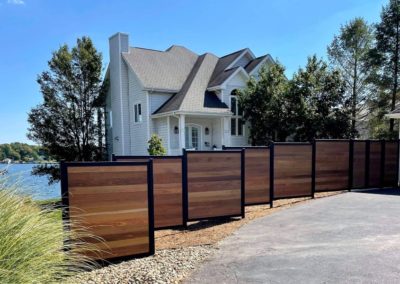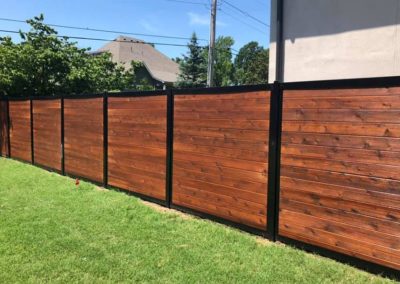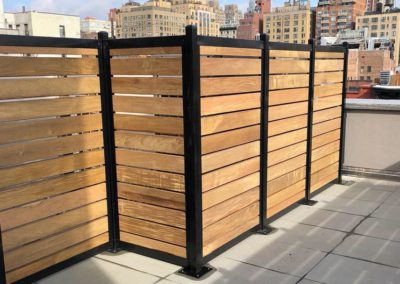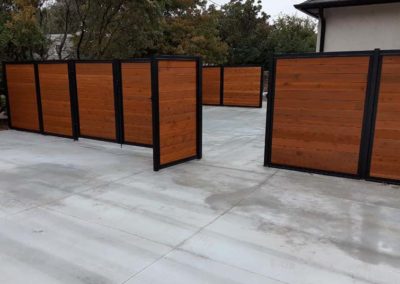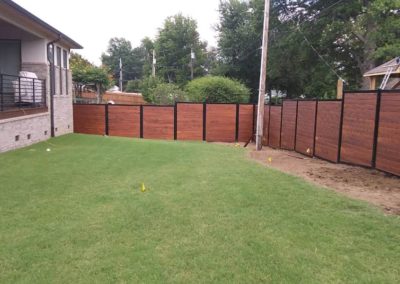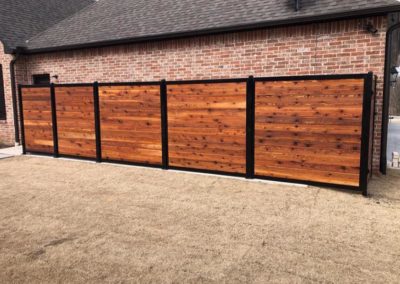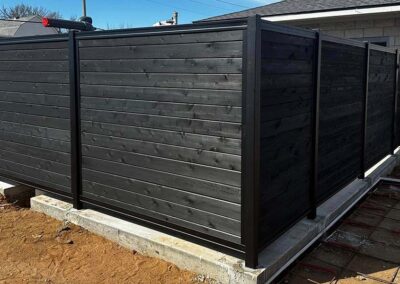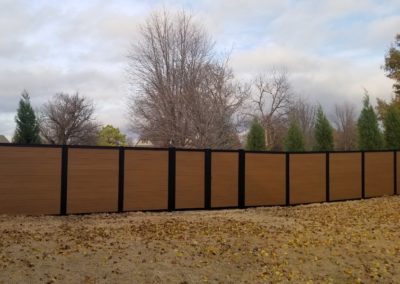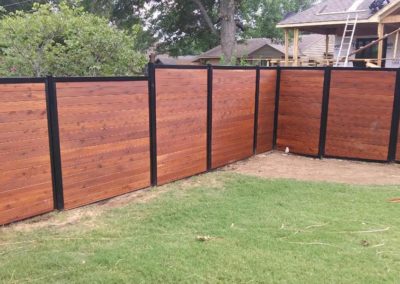Modular Fencing: FenceTrac Makes it Easy
What is Modular Fencing?
Modular fencing is a modern approach to building fences that prioritizes flexibility, ease of installation, and customization.
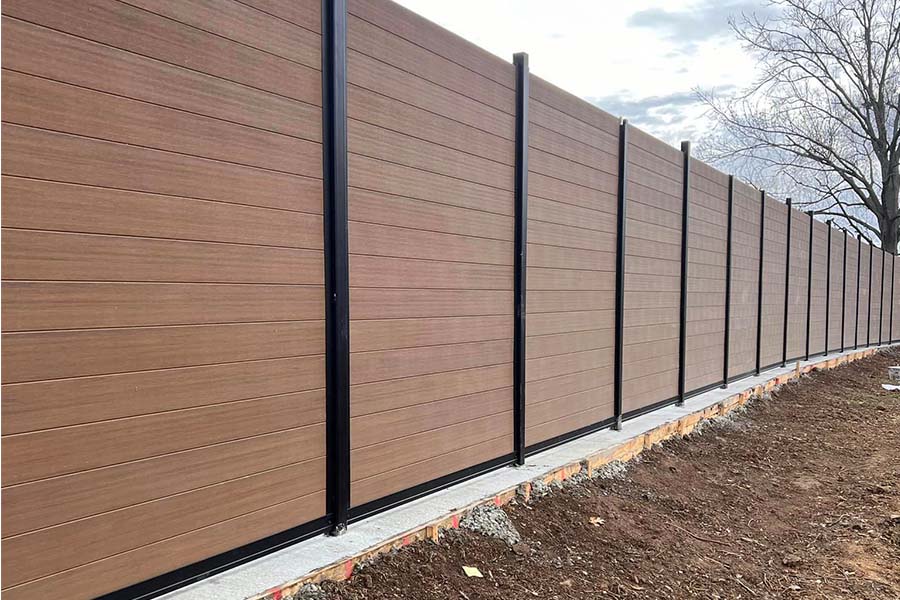
Unlike traditional fencing methods that might involve extensive construction or the need for custom solutions…
Modular fencing consists of pre-manufactured panels or sections that can be easily assembled and configured to fit various needs and preferences.
Key Features of Modular Fencing:
Pre-Fabricated Panels
Modular fencing systems come with pre-cut and pre-designed panels that simplify the assembly process.
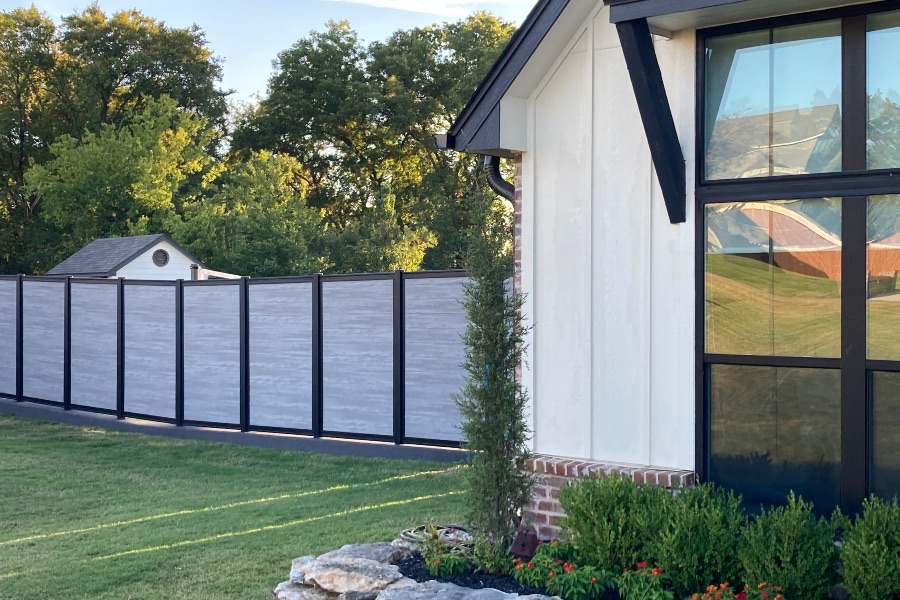
These panels can be easily connected, creating a sturdy and attractive fence without the need for specialized tools or skills.
Versatility
The modular nature allows for a wide range of designs and heights.
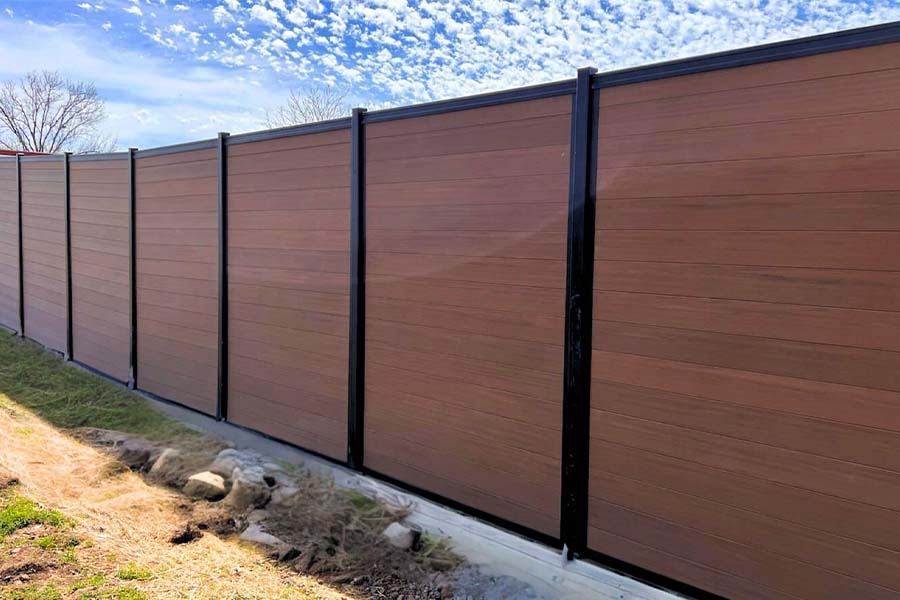
Panels can be mixed and matched to achieve the desired look or functionality, whether it’s for privacy, security, or aesthetic appeal.
Ease of Installation
Since the components are designed to fit together seamlessly, modular fencing can typically be installed quickly and with minimal labor.
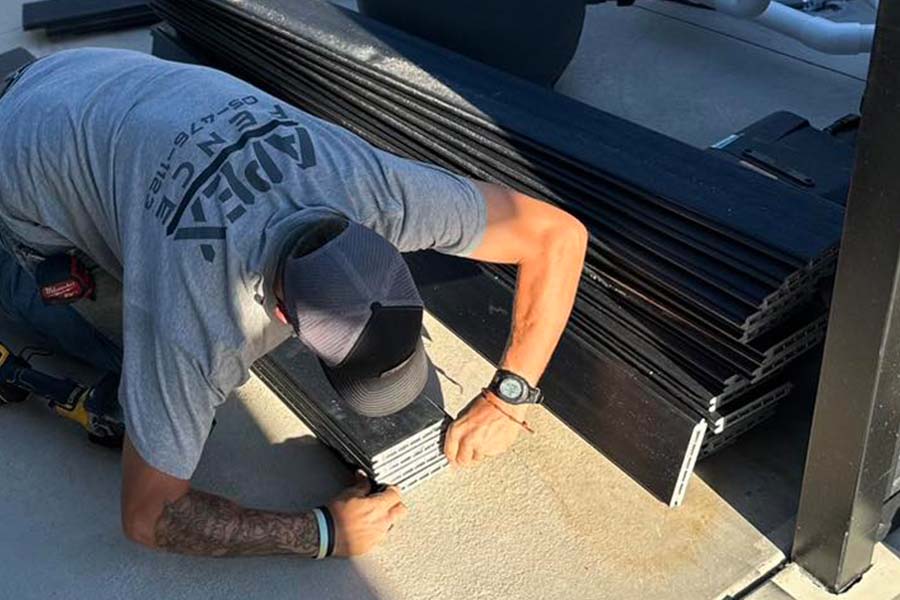
This often translates to reduced installation costs and less disruption to your property.
Customization
Modular systems offer various styles, materials, and colors.
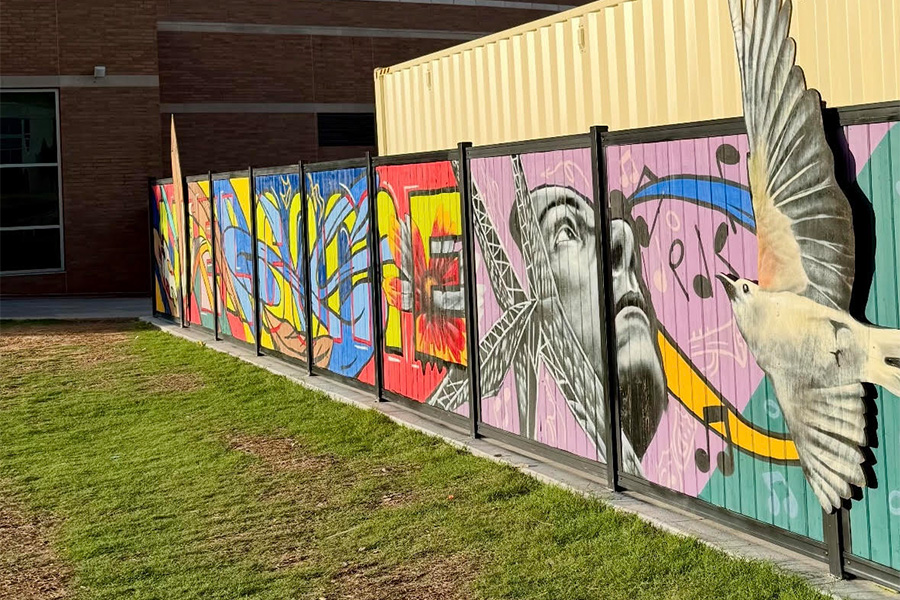
This customization means you can adapt the fence to complement your property’s design or your personal preferences.
Maintenance
Many modular fencing systems are designed to be low-maintenance, with materials that resist weathering, decay, and pests.
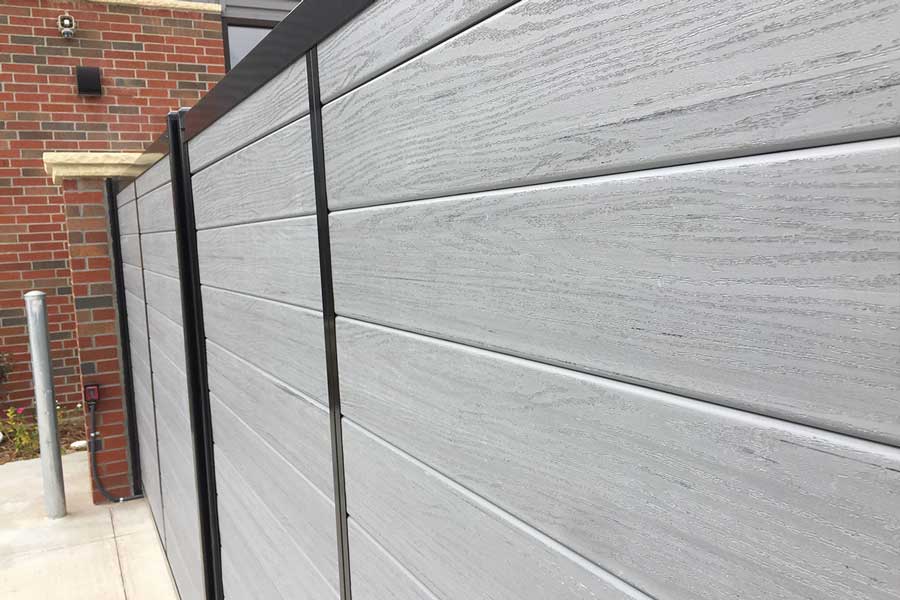
This durability ensures that your fence remains in good condition with minimal upkeep.
Adaptability
If you need to expand or alter your fence in the future, modular fencing allows for easy adjustments.
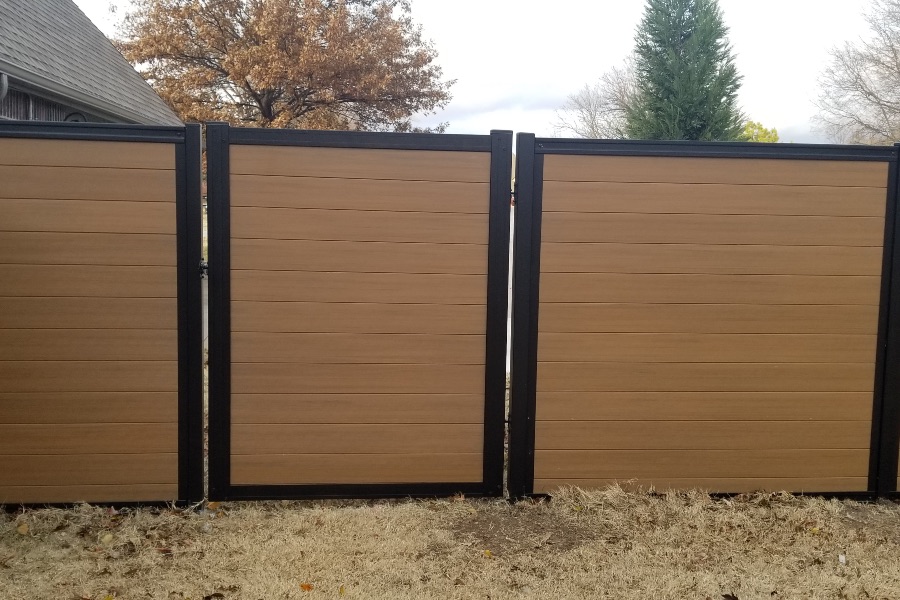
Additional panels can be added or replaced without the need for extensive reconstruction.
Difference between Modular Fence and Traditional Fence
Modular fences and traditional fences differ primarily in their construction and installation processes.
Modular fences are composed of pre-fabricated panels that are designed to fit together easily, allowing for a straightforward assembly with minimal tools and effort.
This pre-manufactured approach results in quicker installation compared to traditional fences, which are built on-site from raw materials like wood, metal, or masonry.
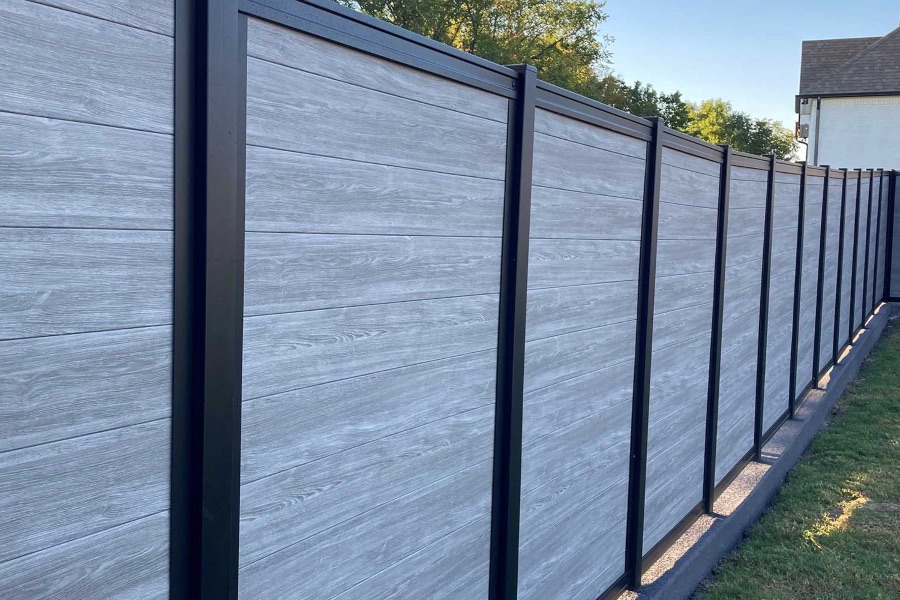
Traditional fencing requires manual cutting, measuring, and assembling of materials, often involving more complex steps such as setting posts and aligning boards.
As a result, traditional fences typically take longer to install and can be more labor-intensive.
Customization and maintenance also distinguish the two types.
Modular fences offer a range of pre-designed styles and materials, providing flexibility within a set framework.
While this allows for a good degree of personalization, it is still limited to the options provided by the manufacturer.
Traditional fences, on the other hand, offer greater freedom for customization since they are constructed on-site.

This enables homeowners to tailor every aspect of the fence, from materials to design.
However, traditional fences often require more ongoing maintenance, particularly if using materials like wood, which can be prone to rot and pest damage.
In contrast, modular fences are typically made from low-maintenance materials like vinyl or composite, which are designed to withstand the elements and reduce upkeep.
What Are the Benefits of Modular Fence?
Quick and Easy Installation
Modular fences are designed for straightforward assembly, thanks to their pre-fabricated panels that fit together seamlessly.
This streamlined installation process means that the fence can be set up much faster compared to traditional fencing methods.

The ease of installation reduces labor time and often results in lower installation costs, making it a convenient option for both residential and commercial projects.
Customization and Design Flexibility
Modular fencing systems offer a high degree of customization within a pre-defined framework.
Panels come in various styles, heights, and materials, allowing property owners to choose options that best match their aesthetic preferences and functional needs.
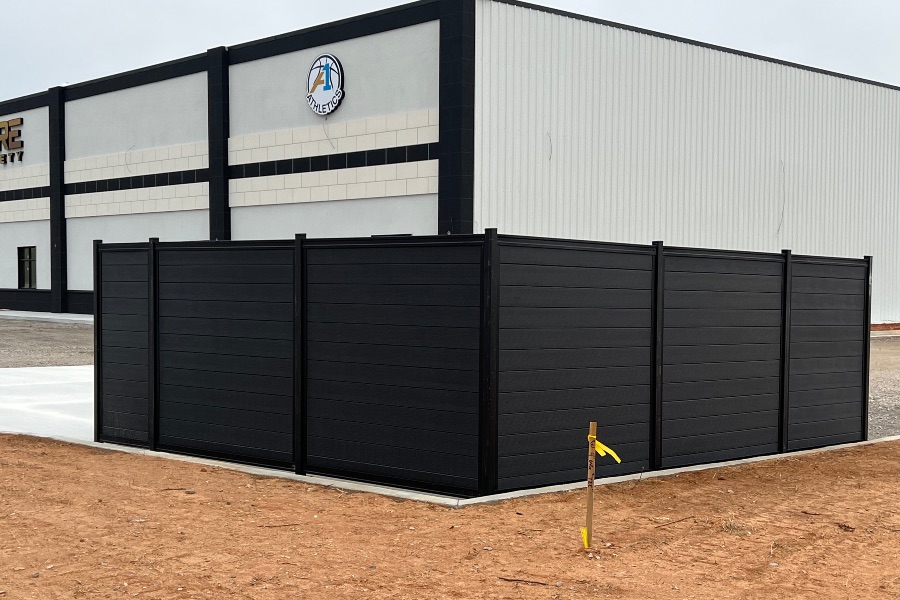
This flexibility enables easy adjustments or expansions to the fence as requirements change, without the need for extensive reconstruction.
Low Maintenance Requirements
Many modular fences are made from durable materials such as vinyl or composite that are resistant to weathering, fading, and pests.
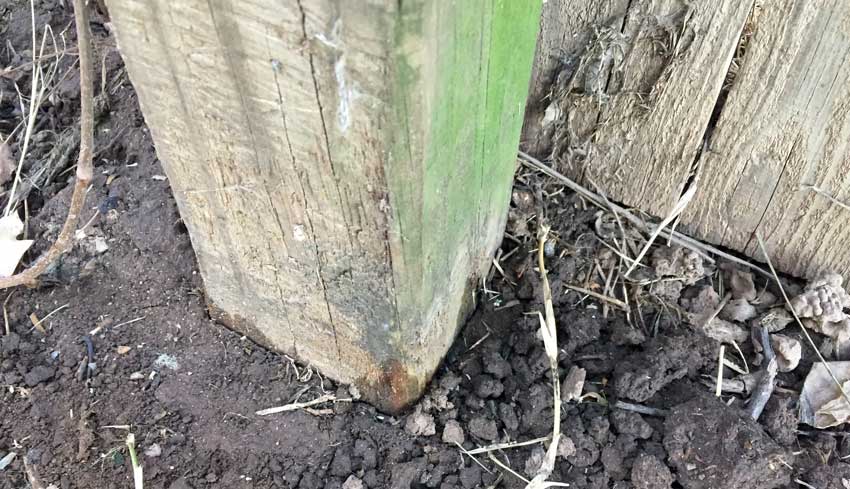
These materials typically require minimal upkeep compared to traditional options like wood or metal.
The reduced need for painting, staining, or repairs makes modular fences a cost-effective and hassle-free solution over the long term.
Durability and Longevity
Modular fencing systems are engineered to be robust and long-lasting.
The materials used are often designed to withstand various environmental conditions, including UV exposure, rain, and temperature fluctuations.
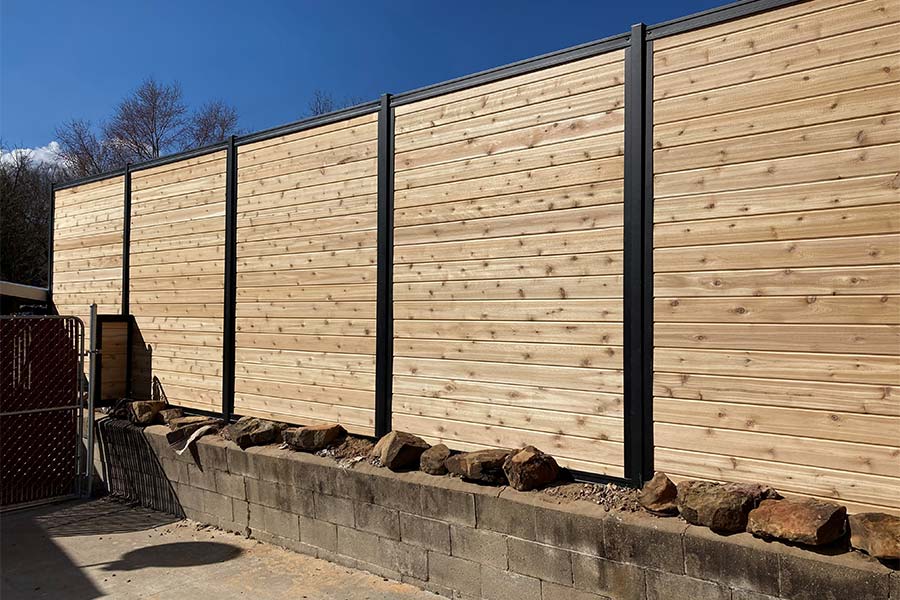
Many modular fences come with warranties that reflect their durability, offering confidence in their performance and longevity.
Aesthetic Appeal and Environmental Benefits
Modular fences provide a clean, modern look that can enhance the visual appeal of any property.
With a range of design options available, they can complement various architectural styles and landscaping themes.
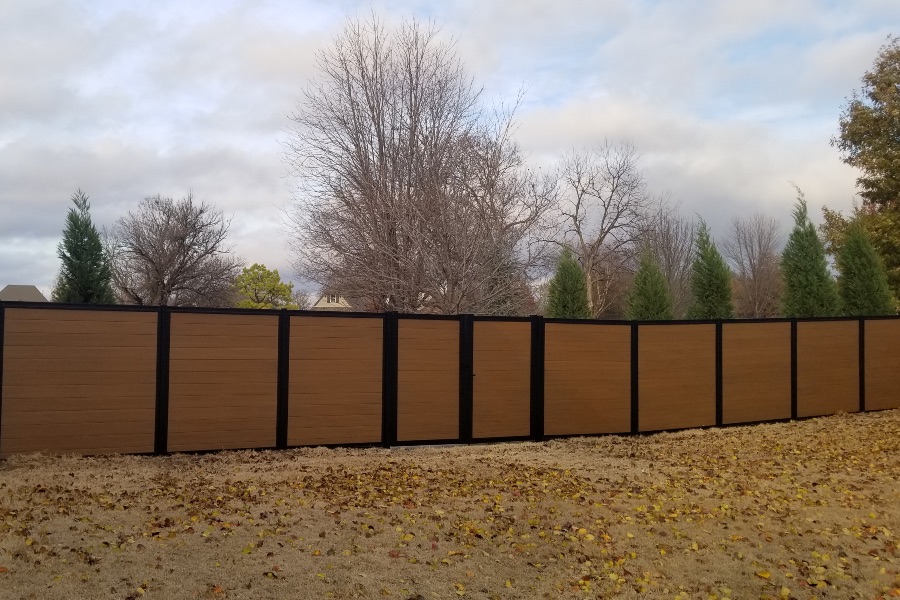
Additionally, some modular fencing systems are constructed from recycled or sustainable materials, making them an eco-friendly choice that reduces environmental impact.
This combination of aesthetic appeal and environmental consideration adds to the overall attractiveness of modular fencing solutions.
Typical Modular Fencing
Modular fencing is highly valued for its ease of installation and low maintenance, but it often comes with limited design options.
Many modular fencing systems are built around a set of standardized panels and components, which prioritize functionality and uniformity over extensive customization.
This can result in a more uniform appearance that may not fully align with every property’s unique style or architectural theme.
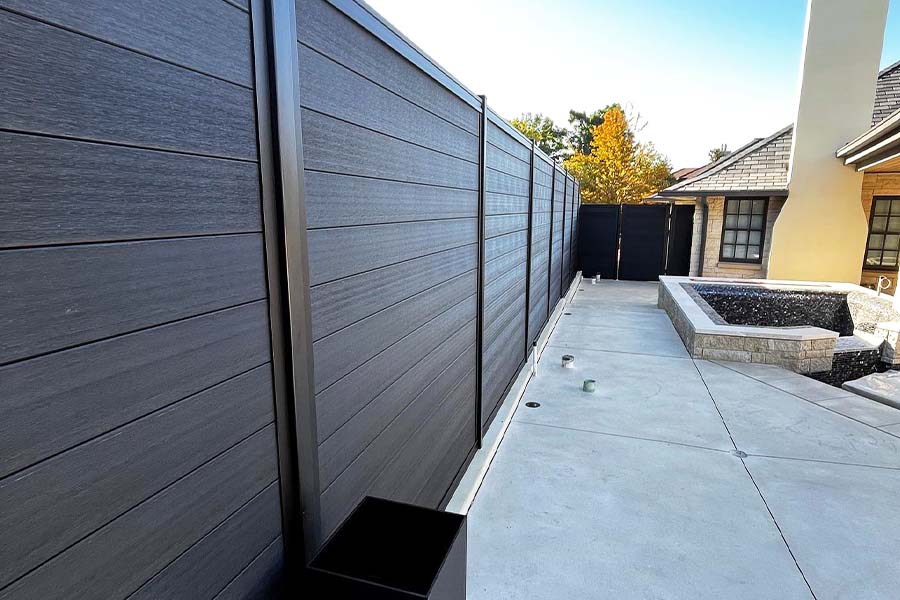
The pre-defined styles and materials available with modular fences provide practical solutions but can restrict the ability to create a highly personalized or intricate design.
In contrast, traditional fencing methods offer greater flexibility and freedom for customization.
By building on-site, traditional fences allow for a wider range of materials, designs, and dimensions, accommodating more specific aesthetic preferences and architectural requirements.
While modular fences are practical and efficient, their standardized approach might not cater to those seeking a more bespoke or distinctive look.
For property owners who desire a high level of design flexibility, combining modular components with custom elements or exploring traditional fencing options might be necessary to achieve their vision.
Better Modular Fencing with FenceTrac
1. Enhanced Design Flexibility
FenceTrac revolutionizes modular fencing by offering greater design flexibility compared to traditional modular systems.
While many modular fences come with limited pre-defined styles and options, FenceTrac’s unique track-based system allows for more customization.

This innovative design enables you to choose from a wide variety of infill materials—such as wood, metal, or composite—while using a standardized framework.
This adaptability ensures that you can achieve a more personalized and aesthetically pleasing look, tailored to your specific taste and property needs.
2. Superior Durability and Strength
FenceTrac is engineered with durability in mind.
Its robust track system and high-quality materials are designed to withstand various environmental conditions, including extreme weather, UV exposure, and physical impacts.
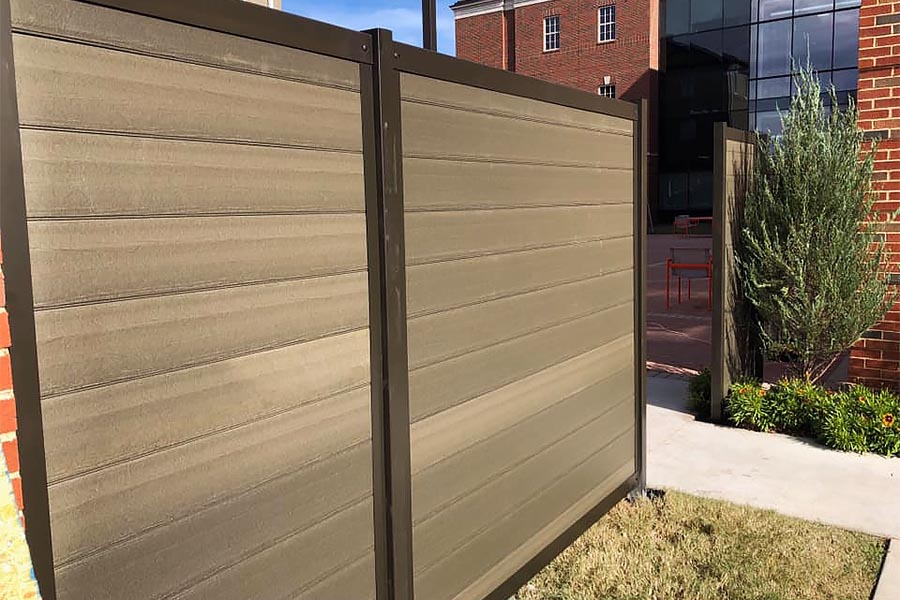
The system’s strength is further enhanced by its design, which securely holds the infill materials in place, reducing the likelihood of warping or damage over time.
This durability not only extends the lifespan of the fence but also ensures that it remains an attractive and functional feature of your property for years to come.
3. Easier Maintenance and Upgrades
One of the standout features of FenceTrac is its ease of maintenance and potential for future upgrades.
The modular design allows for simple replacement or upgrading of infill panels without needing to dismantle the entire fence.
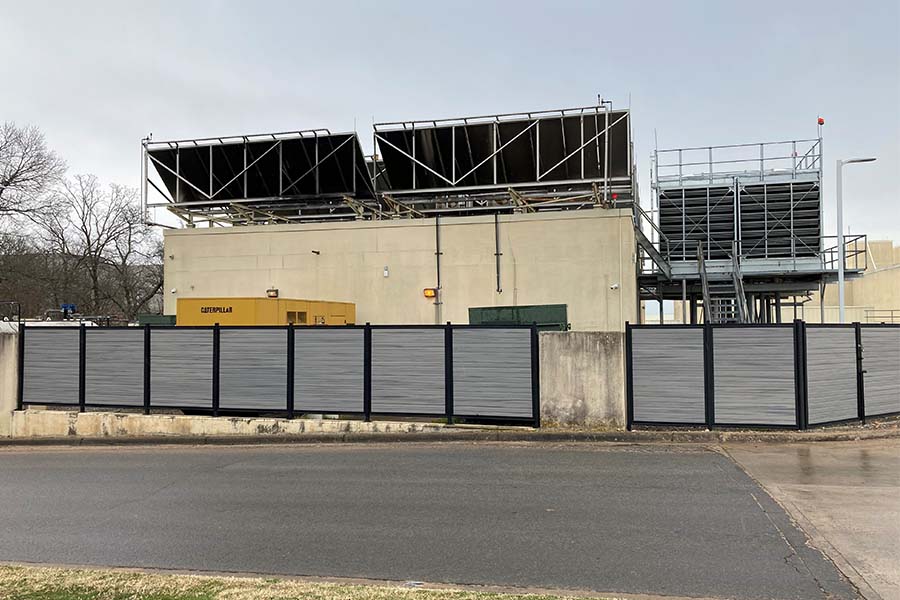
If you decide to change the look of your fence or repair damaged sections, you can easily swap out the infill materials while keeping the original framework intact.
This flexibility makes it easier to maintain the fence’s appearance and adapt to changing preferences or needs.
4. Streamlined Installation Process
FenceTrac’s modular system is designed for a streamlined installation process.
The track-based framework simplifies the assembly and alignment of infill panels, which can significantly reduce installation time compared to traditional fencing methods.
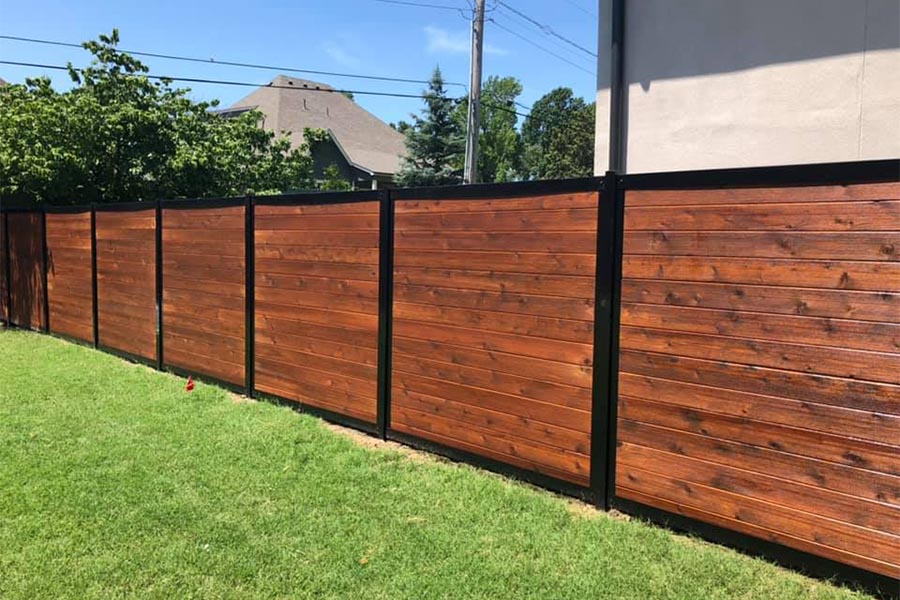
The system’s design also minimizes the need for specialized tools or extensive labor, making it a more efficient and cost-effective solution.
This ease of installation ensures that your fence is up and functioning quickly, without sacrificing quality or structural integrity.
5. Eco-Friendly Options
FenceTrac offers eco-friendly options for those concerned with sustainability.
The system’s design supports the use of recycled or sustainable materials for infill panels, which can reduce the environmental impact of your fencing project.
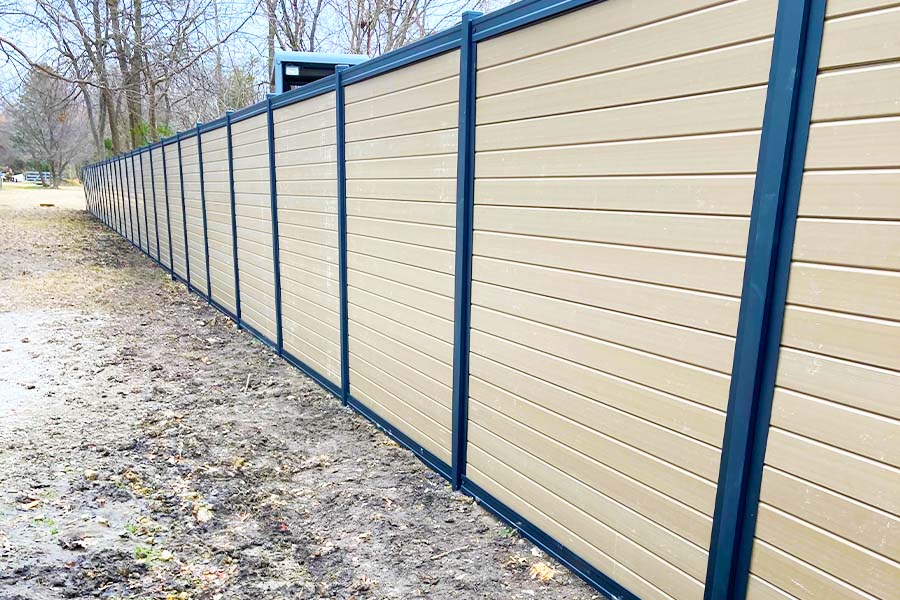
By incorporating eco-conscious materials, FenceTrac helps you create an attractive and functional fence while also supporting environmental responsibility.
This focus on sustainability is an added benefit for homeowners and businesses looking to minimize their ecological footprint while enhancing their property’s appeal.
How to Build a Modular Fence
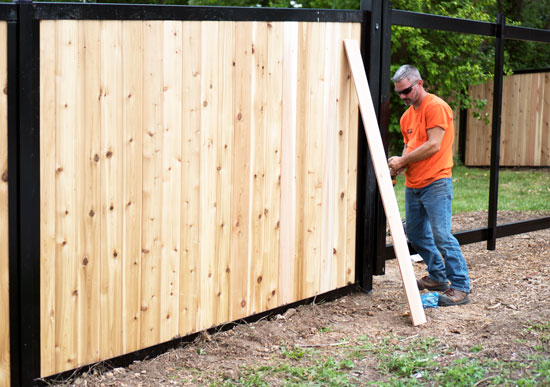
- To build a modular fence, start by planning your design and accurately measuring the area where the fence will be installed.
- Clear the site of debris and level the ground, then dig post holes if needed, setting the posts in concrete for added stability.
- Install the framework or tracks according to the manufacturer’s instructions, ensuring it is level and aligned.
- Next, attach the modular panels or infill materials to the framework, checking for proper alignment and secure fastening.
- Finally, inspect the completed fence for any gaps or loose sections, make any necessary adjustments, and clean the area to finish the installation.
Watch Horizontal Modular Fence Assembly Video
A Better Way to Design Your Modular Fence
The FenceTrac fence system offers unlimited fence design possibilities for your modular fence.
Our patented fence panel system includes a U-shaped framework into which infill materials can be placed.
This system allows you choose the materials and colors you want to go into the fence panel frame.
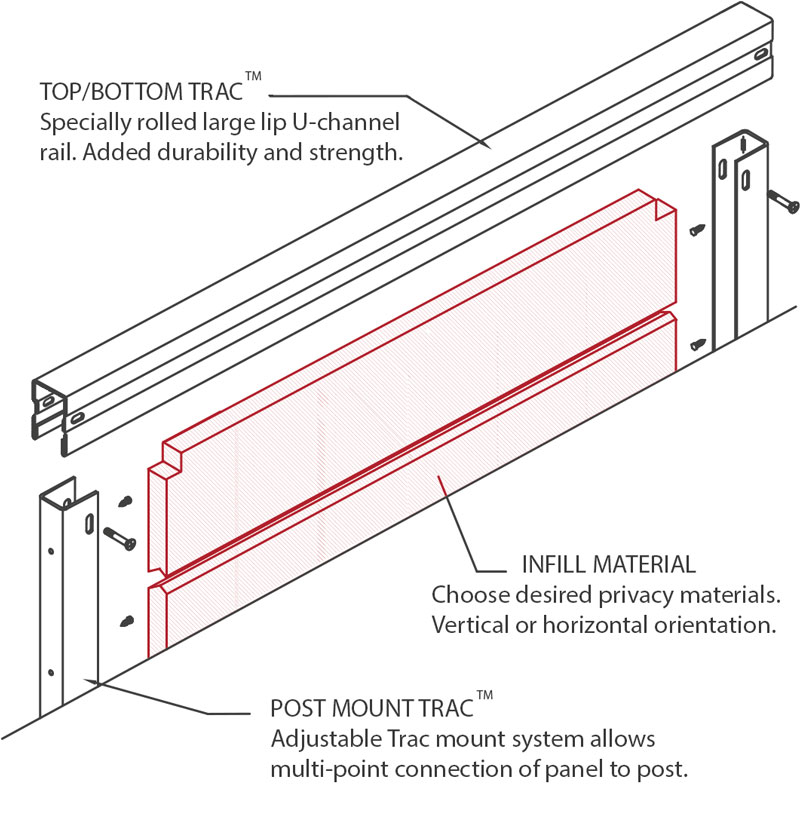
Side channels bolt to each post with self-tapping screws.
Then.
The infill material easily slides into the U-shaped FenceTrac fence panel frame that sits between each post.
The top and bottom channels attach to the side channels to hold everything together.
Each four-piece panel assembles with just four bolts.
Easier to build than live fencing.
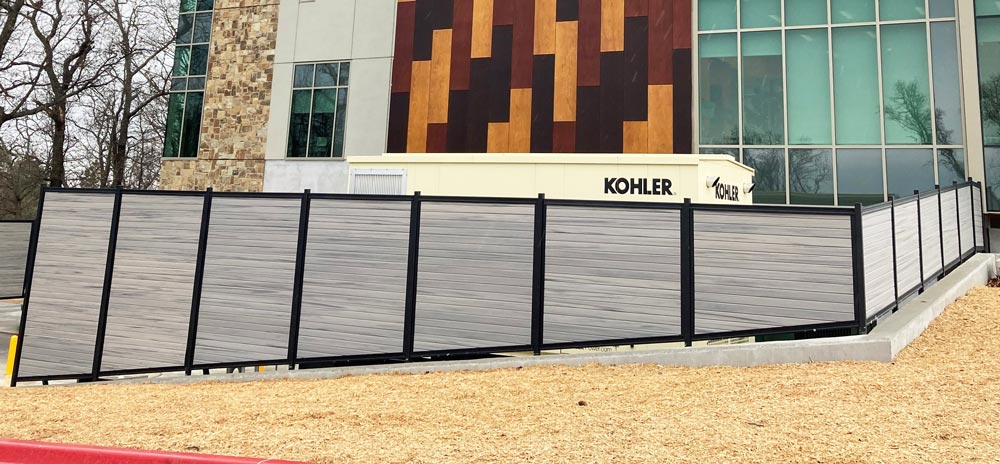
FenceTrac accommodates infill materials of up to 1-inch thick.
Design your fence with vertical or horizontal slats.
We offer cedar wood and PVC infill options shipped with your kit, but some property owners supply their own infill as well.
- Western red cedar
- Eastern red cedar
- Cypress boards
- Treated pine
- Ipe boards
- Wood pallets
- Barn wood
- Vinyl planks
- Composite planks
- PVC planks
- Hardie board
- Metal screen
- Wood rails
- Black slats
- White slats
- Metal sheets
- Metal panels
- Perforated metal
- Etched metal
- Lattice panels
- Wood & iron
- Welded wire
- Cattle panels
- Reclaimed wood
- Corrugated metal
- Ribbed metal
- Stone veneer panels
- Brick veneer panels
- Bamboo
- Wrought iron
Horizontal Modular Fence Idea Gallery
Conclusion
Installing a modular fence is a rewarding project that enhances any outdoor space, whether for residential or commercial use.
Designing a modular fence elevates the appearance of your property, taking its overall look to a new level.
Get a quick online quote today and make your ideal fence a reality, seamlessly combining style, functionality, and sustainability for a perfectly harmonized outdoor environment.

